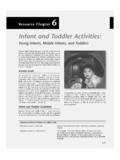Transcription of A BRIEF SURVEY OF STATE INTEGRATED RESOURCE …
1 A BRIEF SURVEY OF STATE INTEGRATED RESOURCE PLANNING RULES AND REQUIREMENTS Prepared for the American Clean Skies Foundation April 28, 2011 AUTHORS Rachel Wilson, Paul Peterson Table of Contents 1. INTRODUCTION .. 1 2. SPECIFICS OF STATE IRP 4 A. IRP PLANNING 6 B. FREQUENCY OF 8 C. RESOURCES EVALUATED IN INTEGRATED RESOURCE 9 D. RETIREMENTS AND 11 E. LONG-TERM PROCUREMENT PLANNING 13 3. CONCLUSION .. 16 4. APPENDIX 17 1As energy demand both increases and declines over time in the United States, and the generation fleet ages, utilities must plan to add and retire resources in the most cost-effective manner while still maintaining applicable reliability standards. INTEGRATED RESOURCE planning has been an accepted way in which utilities can create long-term RESOURCE plans since the late 1980s.
2 STATE requirements for RESOURCE plans vary in terms of planning horizon, the frequency with which plans must be updated, and the resources required to be considered, among other things. As the electric industry began to restructure in the mid 1990s, however, INTEGRATED RESOURCE planning rules were often repealed or ignored. Procurement planning requirements have replaced INTEGRATED RESOURCE planning in some restructured states, and have much in common with the old rules. This report provides an overview of STATE INTEGRATED RESOURCE planning rules, and identifies for each STATE the different elements mentioned above. The report also briefly examines the requirements for generating unit retirements and associated decommissioning costs to the extent that they are included in the planning rules. Procurement planning requirements are also discussed generally.
3 1. Introduction INTEGRATED RESOURCE planning (IRP1) began in the late 1980s as states began to respond to the oil embargos of the 1970s and nuclear cost overruns that occurred during the same time period and into the 1980s. The combination of higher oil prices and skyrocketing nuclear construction costs were felt most strongly in New England, and led to the bankruptcy of several utilities Public Service of New Hampshire, Eastern Utilities, New Hampshire Electric Coop, Eastern Maine Electric Coop, and Vermont Electric Utility Coop. These crises of the 1970s and 1980s caused both utility planners and consumers to examine energy demand and 1 IRP can mean INTEGRATED RESOURCE planning or an INTEGRATED RESOURCE plan. 2use, RESOURCE selection, and risk. Many states opted to implement energy efficiency policies and INTEGRATED RESOURCE planning rules as a By 1991, SURVEY results showed that fourteen states had achieved full-featured IRP status, defined by four characteristics: 1) the STATE IRP process is established through statute, regulation, or case precedent; 2) the process is subject to public review; 3) regulators require integration of construction permit and utility ratemaking processes with the IRP process.
4 And 4) the primary means of evaluating utility plans was through minimization of the present value of RESOURCE Eighteen states had IRP processes in place that were not considered fully-featured, nine states were at the beginning of the IRP process, and the remaining nine states had made little or no progress in implementing an IRP One year later, the federal government defined IRP in the 1992 Energy Policy Act: The term INTEGRATED RESOURCE planning means, in the case of an electric utility, a planning and selection process for new energy resources that evaluates the full range of alternatives, including new generating capacity, power purchases, energy conservation and efficiency, cogeneration and district heating and cooling applications, and renewable energy resources, in order to provide adequate and reliable service to its electric customers at the lowest system cost.
5 The process shall take into account necessary features for system operation, such as diversity, reliability, dispatchability, and other factors of risk; shall take into account the ability to verify energy savings achieved through energy conservation and efficiency and the projected durability of such savings measured over time; and shall treat demand and supply resources on a consistent and INTEGRATED 2 For more information on the development of INTEGRATED RESOURCE planning, see: 1) Hirst, Eric. A Good INTEGRATED RESOURCE Plan: Guidelines for Electric Utilities and Regulators. Oak Ridge National Laboratory. December 1992.; 2) Harrington, et al. INTEGRATED RESOURCE Planning for STATE Utility Regulators. The Regulatory Assistance Project. June 1994.; 3) Weston, Frederick. The Regulatory Assistance Project.
6 INTEGRATED RESOURCE Planning: History and Principles. Presentation at the 27th National Regulatory Conference. May 20, 2009. 3 Mitchell, Cynthia. Lagging in least-cost planning Not as far along as we thought. The Electricity Journal. Volume 2, Issue 10. December 1989, Pages 24-31. 4 Id. 5 Energy Policy Act of 1992. 111(d)(19) Text available at: 3 Simply put, INTEGRATED RESOURCE planning means ensuring the long-term reliability of delivered energy at the lowest practical cost. The Energy Policy Act established a requirement that any municipal utility that purchased electricity from the Western Area Power Administration (WAPA) had to create an IRP, though the utility did not have to make it publicly available. Steps taken in the creation of an IRP include: forecasting future loads, identifying potential RESOURCE options to meet those future loads and their associated costs, determining the optimal mix of resources, receiving and responding to public participation (where applicable), and creating and implementing a RESOURCE plan.
7 Figure 1, below, shows these steps in a flow chart. Figure 1. Flow Chart for INTEGRATED RESOURCE Common risks that are addressed by scenario or sensitivity analysis in IRPs include: fuel prices (coal, oil, and natural gas), load growth, electricity spot prices, variability of hydro resources, market structure, environmental 6 Hirst, Eric. A Good INTEGRATED RESOURCE Plan: Guidelines for Electric Utilities and Regulators. Oak Ridge National Laboratory. December 1992. page 5. As it appears in Harrington, et al. INTEGRATED RESOURCE Planning for STATE Utility Regulators. The Regulatory Assistance Project. June 1994. 4regulations, and carbon dioxide and other emission When plans are filed, the Public Utilities Commission reviews the plan, and may acknowledge (or not) that the IRP has been filed and that basic requirements have been met.
8 The Commission can also accept or reject all, or portions of, the plan, and can also comment on or identify concerns about the plan. Possible Commission actions are specified in STATE IRP rules. The Commission does not actively monitor utility actions that are taken based on the IRP, but rather waits until the results of those actions come up for review in rate cases, prudence reviews, fuel cost adjustments, certificates of public convenience and necessity, review of utility power purchases, and RESOURCE acquisition cases. IRP findings may be used as supporting evidence in these various Various STATE IRP rules and their individual requirements are discussed in the sections below. 2. Specifics of STATE IRP Rules While some STATE IRP rules have remained unchanged since they were first implemented, other states have amended, repealed, and in some cases reinstated their IRP rules.
9 Figure 2, below, shows those states that currently have IRP rules, states that are developing or revising IRP rules, and states that do not have an IRP rule. 7 Hopper, Charles and Nicole Goldman. Lawrence Berkeley National Laboratory. Review of Utility RESOURCE Plans in the West. Presentation at the New Mexico PRC IRP Workshop, Santa Fe, New Mexico. June 8, 2006. Slide 17 8 Sedano, Richard. The Regulatory Assistance Project. INTEGRATED RESOURCE Planning: Process and Rules in the West. Presentation to the New Mexico Public Regulation Commission. June 8, 2006. Slide 44. 5 AKTXUTMTCAAZIDNVORIACOKSWYNMMOMNNEOKSDWA ARNDLAHIILOHFLGAALWIVAINMIMSKYTNPANCSCWV NJMENYVTMDNHCTDEMARIS tate has an IRP rule and filing requirementState is developing or revising an IRP rule and filing requirementState does not have an IRP ruleFigure 2.
10 Presence or Absence of STATE INTEGRATED RESOURCE Planning Rules. IRP rules governing utilities have been created in a number of ways. Bills mandating INTEGRATED RESOURCE planning have been passed into law by STATE legislatures. Rules have been codified under STATE administrative code. And finally, STATE utility commissions have adopted INTEGRATED RESOURCE planning regulations as part of their administrative rules, or have ordered it to be done as a result of docketed There is currently an open proceeding before the Louisiana Public Service Commission Docket R-30021: Development and Implementation of Rules for INTEGRATED RESOURCE Planning for Electric Utilities that may result in the implementation of STATE IRP rules. This proceeding was opened on March 9, 2007. Draft rules were submitted and interveners had the opportunity to provide 9 For a complete list of the rules and regulations associated with INTEGRATED RESOURCE planning in the states, see Appendix 1.



